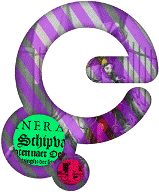This is a guest post by Kathlyn Clore, Associate Editor at the European Journalism Centre who was kind enough to write this report for us after attending the press event.

A cadre of European politicians gathered Thursday at the Museum of the 18th century in Brussels to launch Europeana, a digital museum that allows visitors to explore classic paintings, photos, recordings and texts in the same manner in which it is possible to search, say, Amazon.com.
Trying to access Europeana on the day of its launch, though, was akin to navigating the Vatican Museums in the tourist-thick month of August. It was impossible to see anything, as the project’s three servers were totally overwhelmed.
The Commission said Saturday in a press release that the site received about 10 million hits per hour throughout Thursday – double server capacity. The site was taken down Friday evening and is expected to be back up in mid-December.
Europeana’s three servers are located in the Hague, where the project is headquartered, but programmers plan eventually to put mirror servers around the world.
A pair of Dutchmen programmed Europeana in about 10 weeks, said technical developer Eric Van der Meulen. They added the final two of 21 European languages, Finnish and Hungarian, at 7 p.m. on Wednesday.
Europeana, which is still in beta, was programmed using only open source applications, Van der Meulen said.
“Once we get the thing finished and stabilized, we want to be able to put this down as an open source application so other people can look at it and go, ‘Ok how did you do this?,’ and ‘Wow, maybe we can use this for something.’ The future of computing is open source and not only that but you can get a lot of input from all over the world this way.”
Technical challenges included harvesting and normalizing metadata from more than 1,000 different museums and libraries from around Europe. Half of participating cultural heritage institutions so far are French. The Louvre in Paris, the Institut National de l’Audiovisuel (which contributed footage shot on French battlefields in 1914) and the Rijksmuseum in Amsterdam are three of the biggest participating museums.
Europeana is an outgrowth of The European Library, on which Van der Meulen also worked. But it has in the press been compared to Google’s Library Project. Copyright concerns are abundant in all three projects.
Viviane Reding, European commissioner for media, worked to bring the European Digital Library to fruition prior to realizing Europeana.
Issues of intellectual property will certainly complicate Reding’s goal of adding 10 million more objects over the next two years. The project will receive 2 million Euro over the next two years for that goal, said European Commission president Jose Manuel Barroso on Thursday. For now, all objects on Europeana are in the public domain.
Reding said Thursday that she encourages users of the site to ‘remix’ what’s available. Moving forward, she plans to facilitate dialogue among various stakeholders to find a way to legally include contemporary works. Nobody wants a black hole when it comes to artifacts from the 21st century, she stated. In particular, she said she will continue discussions with books publishers in order to arrange for digitization of orphan works.
The difference between Europeana and existing library projects, though, is in the diversity of digital objects available on Europeana. Van der Meulen, for example, is able to search the names of his family members and come to a recording of his uncle’s 1970s rock band, the Makkers, or photos of his father Leendert Van der Muelen, a world-class cyclist.
“It’s for a lot of people that way,” he said. “Its a fun toy. Everybody Googles their name, you know. Only with this you get associations with your own name that you wouldn’t find in Google.”